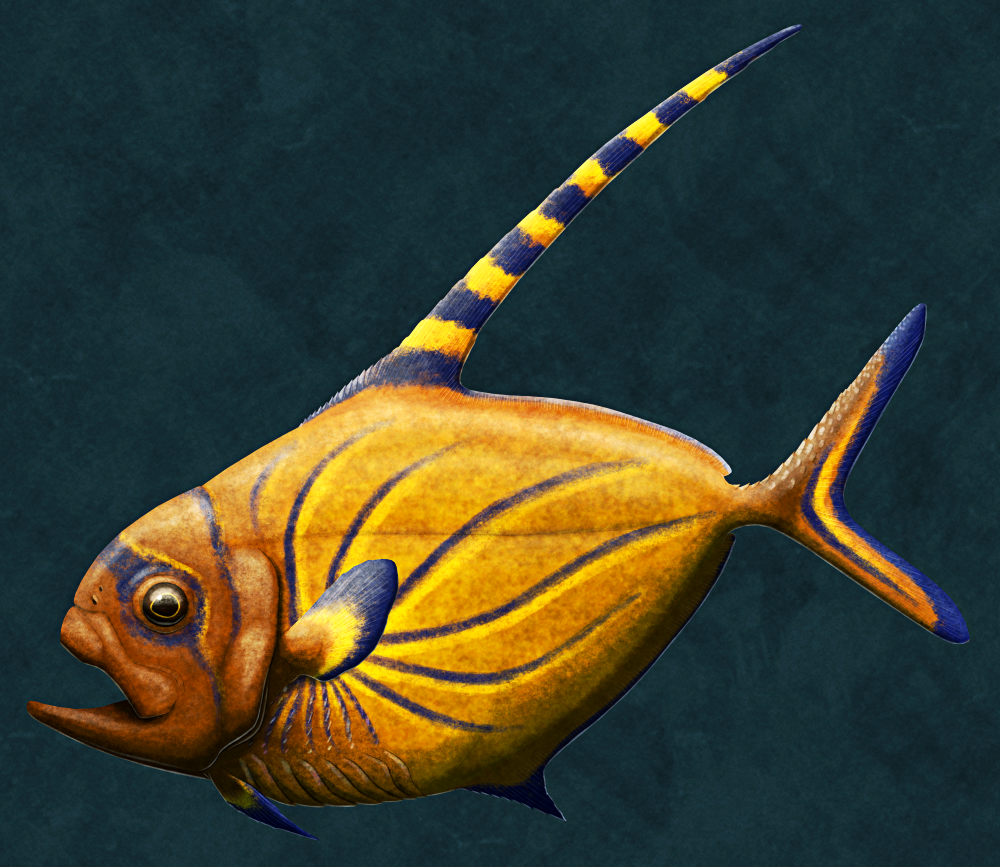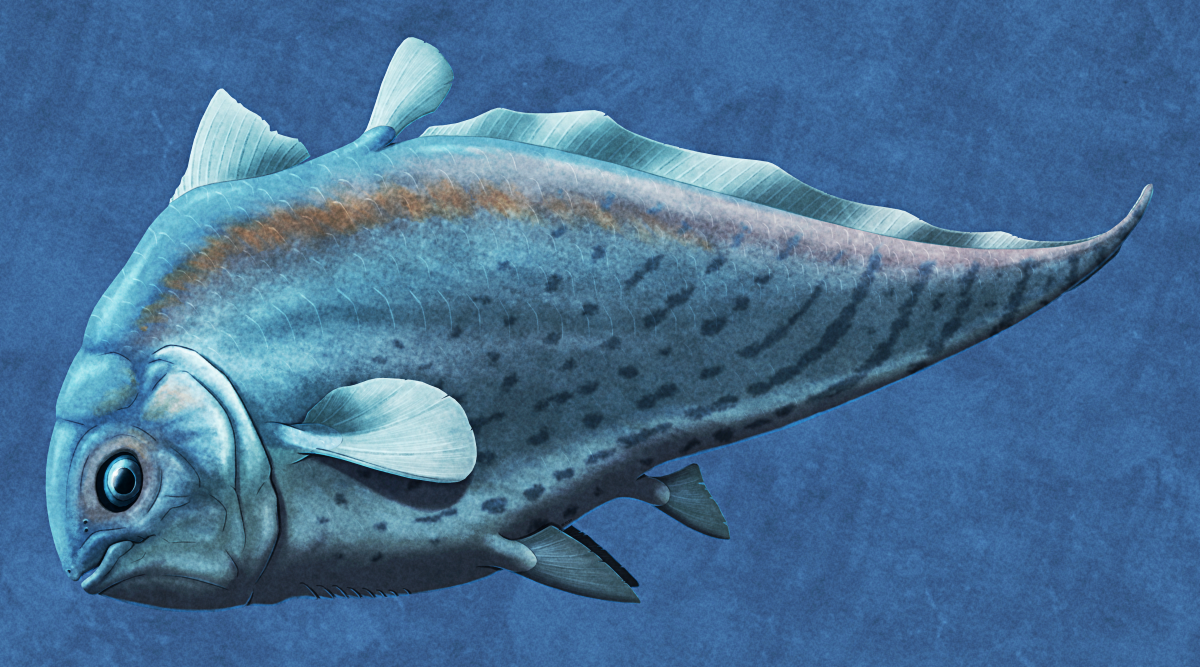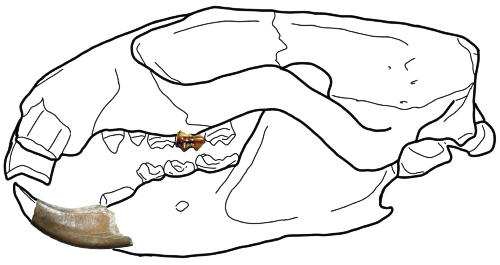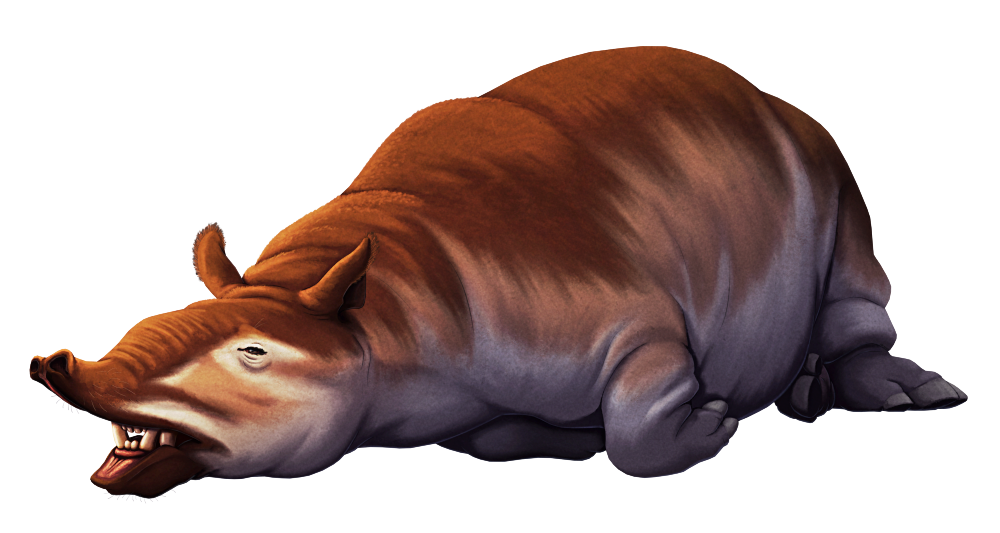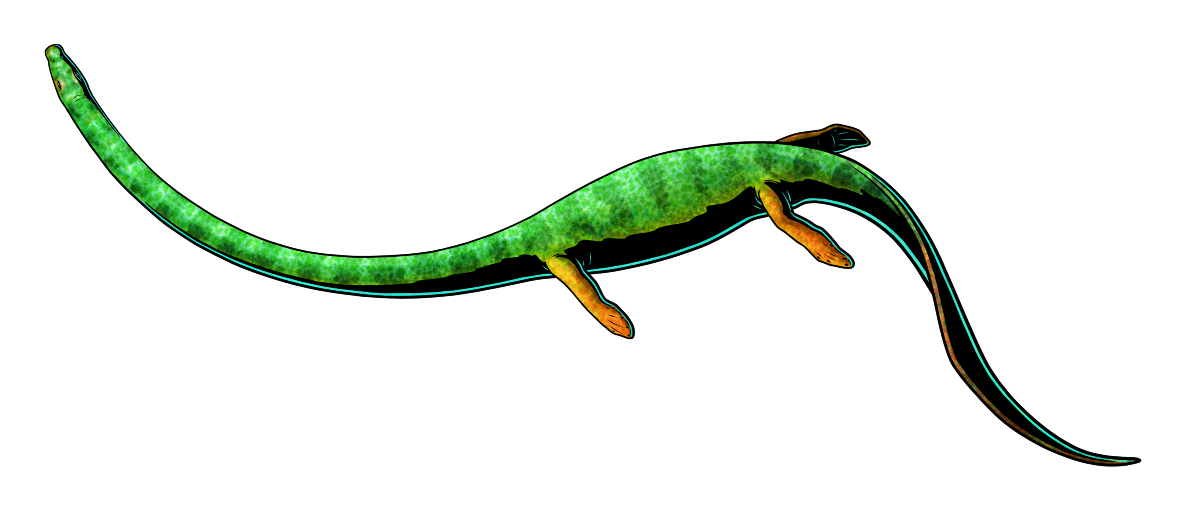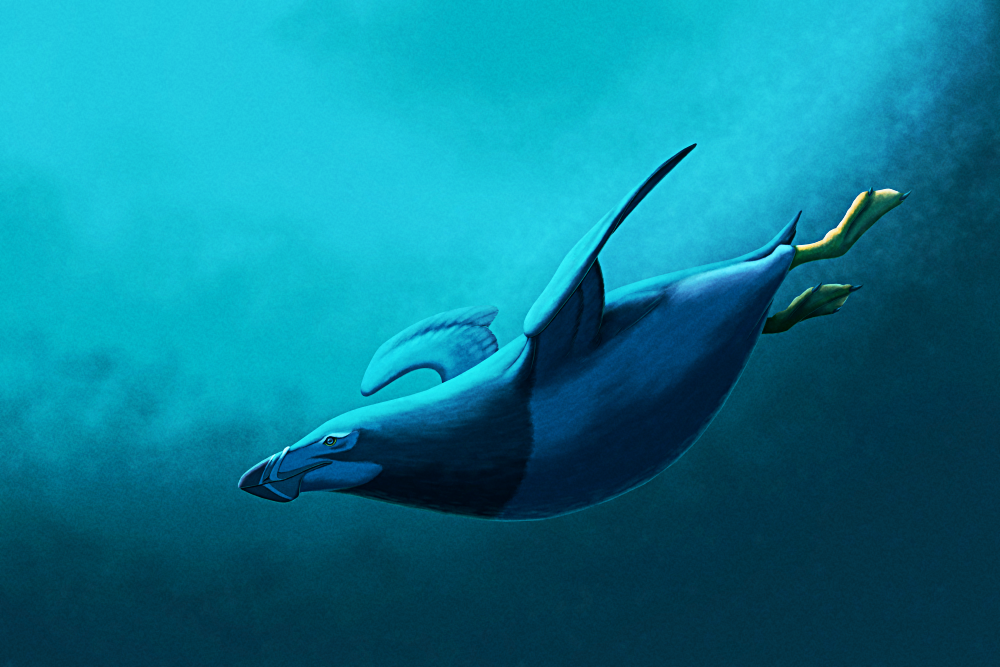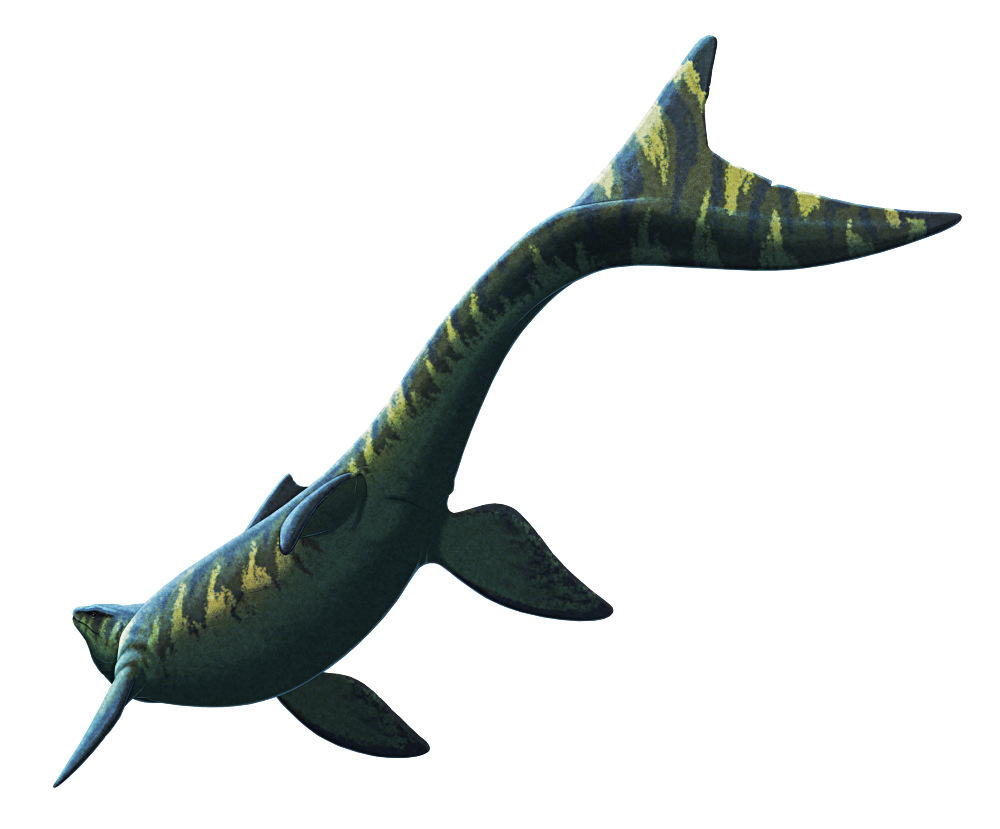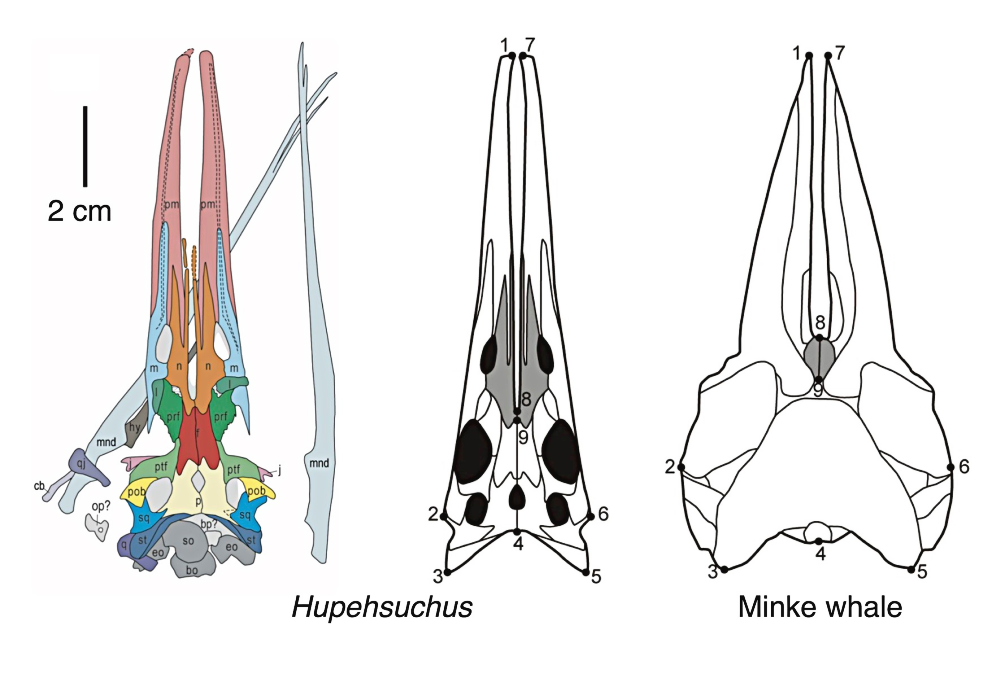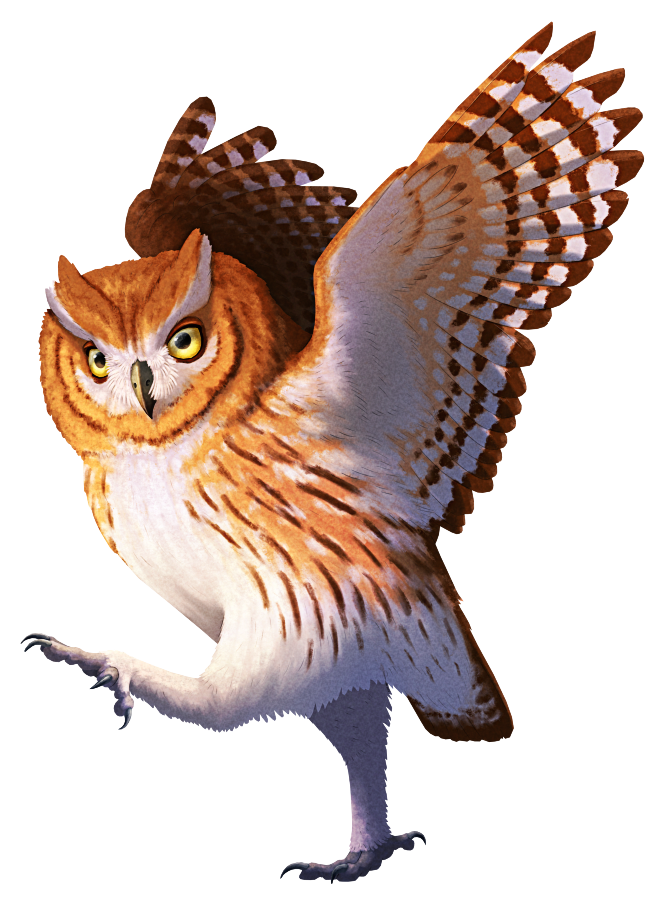Dorypterus hoffmanni was a stem–actinopterygian fish that lived during the late Permian, around 259-254 million years ago, in shallow warm lagoons covering what is now northwestern Europe.
About 13cm long (~5″), it had a tall narrow disc-shaped body convergently similar to modern reef fish, and it was mostly scaleless with only a few scales on its underside, below its pectoral fins, and along the top of its tail. It also appears to have been toothless, and probably used its large scissor-like jaws to snip off mouthfuls of soft food such as algae.
But its most distinctive feature was its highly elongated pennant-like dorsal fin, which may be an example of sexual dimorphism – fossils of short-finned individuals have also been found, and although they were originally named as a separate species (Dorypterus althausi) they probably actually represent female D. hoffmani.
Continue reading “Dorypterus”
